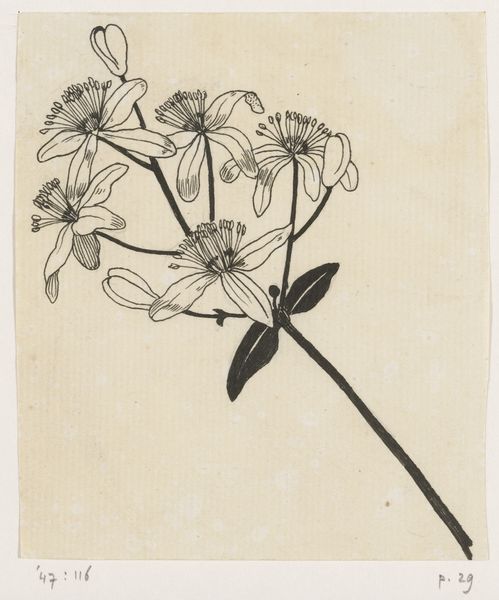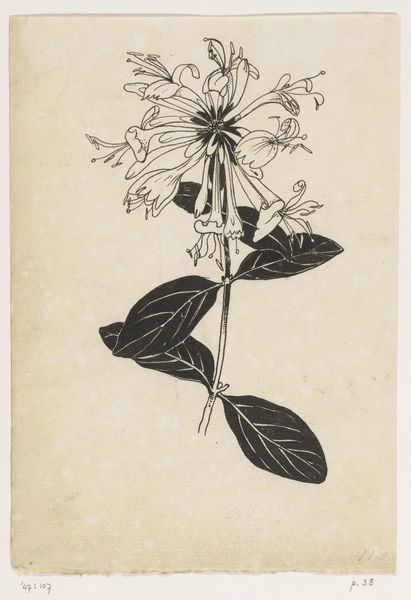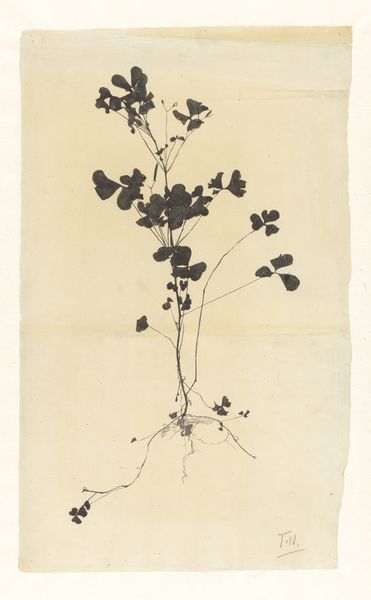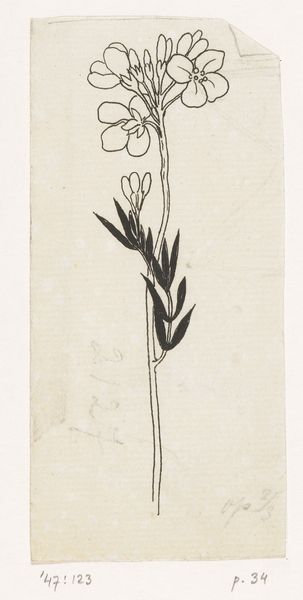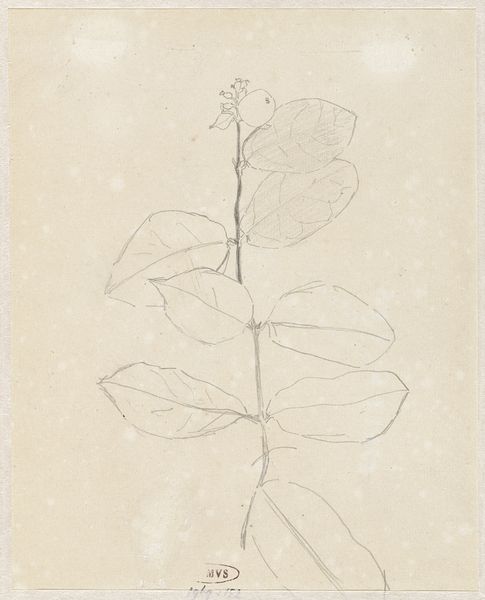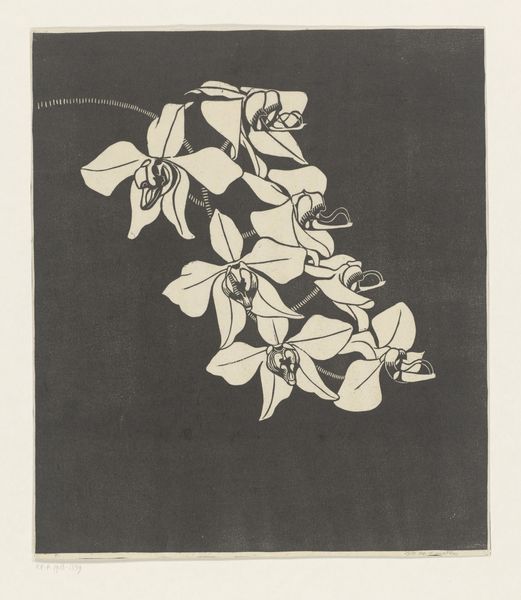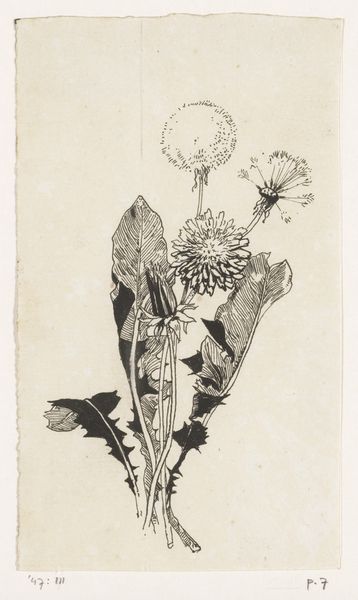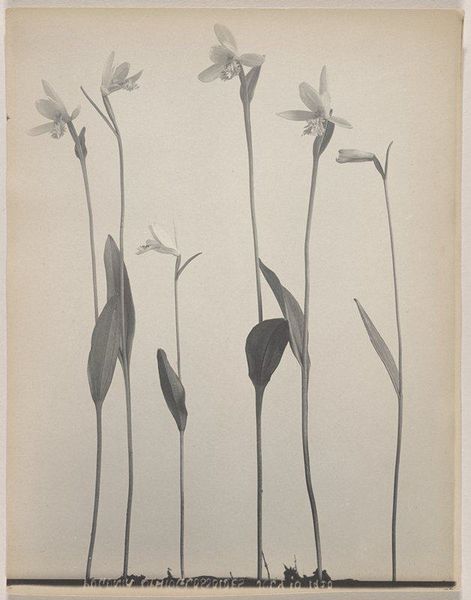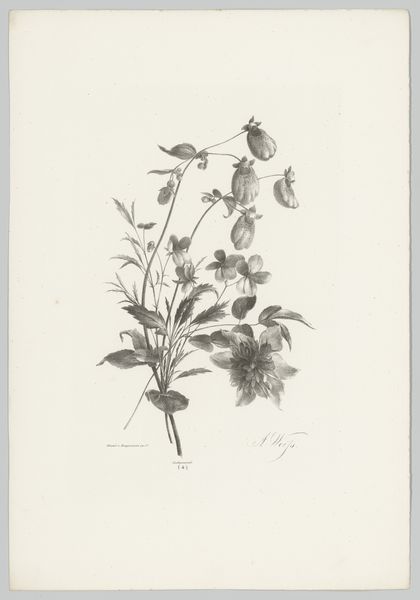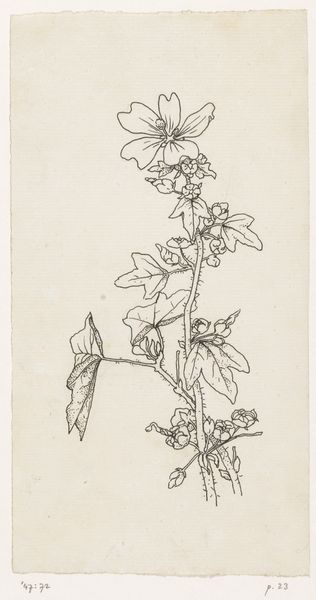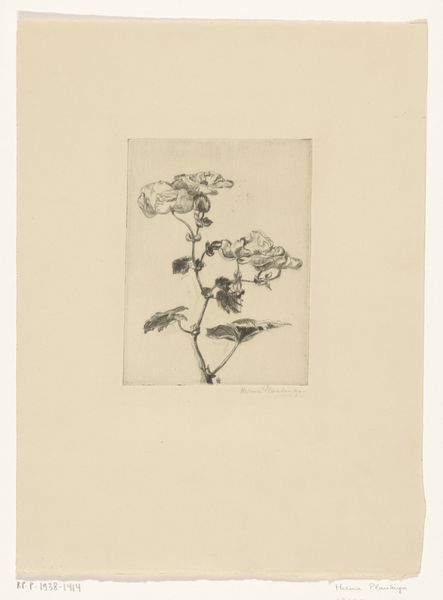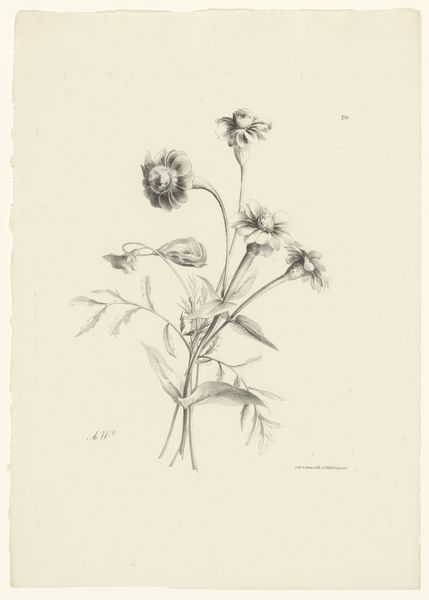
drawing, ink
#
drawing
#
ink
#
plant
Dimensions: height 412 mm, width 257 mm
Copyright: Rijks Museum: Open Domain
Curator: Looking at this ink drawing, titled "Klaver en een andere plant" which translates to "Clover and another plant", was created by Theo Nieuwenhuis, sometime between 1876 and 1951. It's now held here at the Rijksmuseum. What are your initial thoughts on this simple, yet elegant composition? Editor: Hauntingly delicate. The silhouettes against that creamy paper feel almost spectral, like pressed botanicals marking a page in some arcane herbal. Curator: Nieuwenhuis’s style is characterized by a kind of precise naturalism. Notice how each plant is rendered. What we see is a very close study of botanical forms. These plants feel very considered in their placement. Editor: Indeed. The contrast is striking. One plant boasts a dense, fern-like complexity while the other, taller form features a stark, graphic simplicity of bold clover shapes. It creates an interesting tension, almost a silent conversation. Is there any particular symbolism attached to the clover in Dutch art from this period? Curator: The clover, of course, is commonly associated with luck and prosperity, especially in folk traditions. But in the context of late 19th and early 20th-century art, we also see plants as emblems of nature's beauty. As an escape from increasing industrialization, the drawing may evoke themes of resilience, growth, and perhaps even the promise of better times. Editor: I see it too. There's a hushed quality, the way light touches objects in dreams. A feeling of yearning that slips into my own relationship with time. You can also get a good idea about the fragility of it by looking at the edges. I love how art can sometimes act as a portal. Curator: Well said. It seems that the humble plants become powerful conveyors of complex ideas about art’s role in society. These kinds of studies gave license to future generations to celebrate overlooked places. Editor: Right, the work's openness inspires the observer to complete the vision in their own personal lens. Okay, one last long glance... Let's carry on. Curator: Agreed, onward to the next piece.
Comments
No comments
Be the first to comment and join the conversation on the ultimate creative platform.
